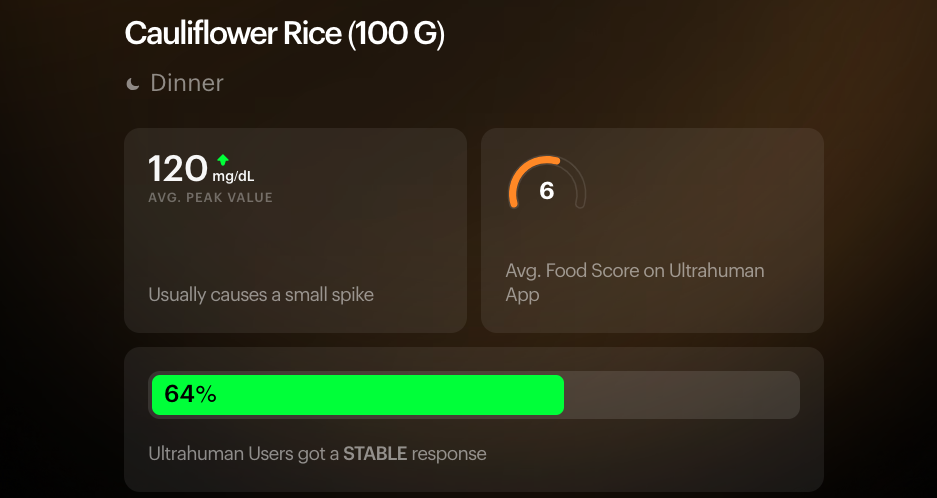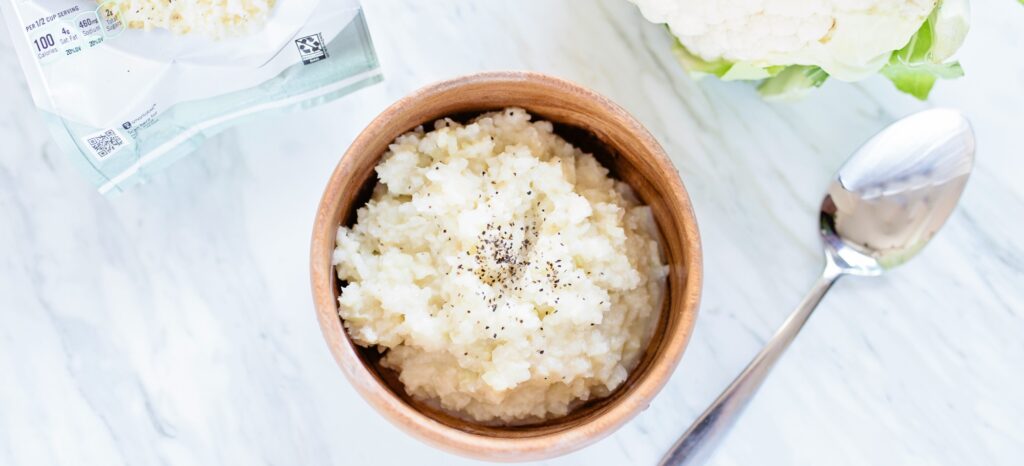Cauliflower rice is often promoted as a healthy, low-carb alternative to traditional grains, especially for people watching their blood sugar. But how does it actually affect glucose levels?
The answer depends on what else you eat with it, your metabolic state, and how your body responds to non-starchy vegetables.
Read on for our full explainer.
Low in carbs, low in glucose impact

On its own, cauliflower rice has a negligible effect on blood glucose. It has a glycemic index (GI) of 15, making it a solid alternative to carby rice for people managing glucose levels.
Unlike white rice or other refined grains, cauliflower rice doesn’t trigger a sharp post-meal glucose rise. It can actually help blunt the impact of higher-GI foods if used as part of a balanced plate that includes protein, fats, and fiber.
According to the Ultrahuman OGDb, data is based on aggregated responses from Ultrahuman Ring AIR and CGM users, cauliflower rice has a low glucose impact when consumed alone or as part of a balanced meal.
64% of people got a stable response. It should always be remembered that some users may tag ‘cauliflower rice’ while consumed with other items, so this should be considered a strong glycemic score.
Why some users still see glucose dips
Despite its low impact, some people see mild glucose dips, what’s often called reactive hypoglycemia, after eating cauliflower rice. This usually happens when it’s consumed alone or in a low-calorie meal without enough protein or fat.
In those cases, the body can overcompensate for the small glucose load by releasing insulin, which may cause a temporary drop in blood sugar. For most people, this isn’t dangerous, but it can lead to feelings of fatigue or hunger.
The fix? Pair cauliflower rice with other macronutrients. A serving of lean protein or healthy fat (like olive oil or avocado) helps stabilize the glucose curve.
What spikes it: sauces, toppings, and add-ons
Cauliflower rice itself isn’t the problem, but what goes with it might be. Add a sweet soy glaze, sweetcorn, or a starchy topping like fried tofu in batter, and you can quickly push the glucose response into the moderate or even high zone.
These combinations raise the glycemic load of the meal. In Ultrahuman user data, we often see this pattern: clean cauliflower rice bowls perform well, while dressed-up versions with sugary sauces or carb-heavy toppings can cause unstable responses.
Conclusion
Cauliflower rice is a metabolically sound choice. Its glucose impact is usually minimal, but the rest of your plate determines how your body responds. Keep it balanced with fiber, fat, and protein, and it remains a powerful ally for glucose control.








